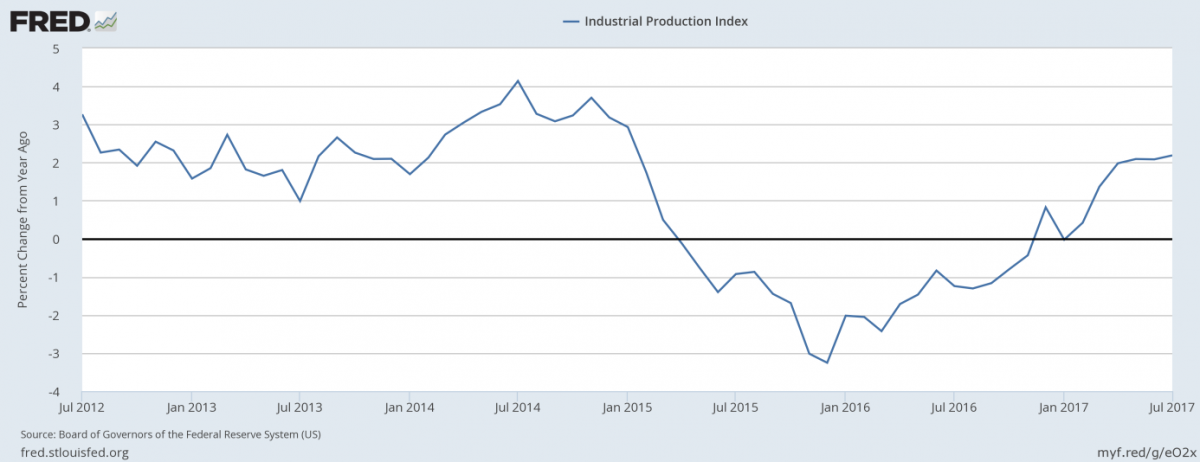July Retail Sales, Other Data And Gold

Last week, a few important US economic reports (including retail sales) were released. What do they imply for the gold market?
Retail Sales Strong In July
The recent days were eventful. The FOMC and the ECB released the minutes of their last meetings, while car attacks occurred in Charlottesville, Virginia, and Barcelona, Spain. Meanwhile, several important pieces of economic news were published. First of all, retail sales jumped 0.6 percent in July, following a 0.3 percent rise in June. The number was significantly above expectations, as analysts forecasted only a 0.3 percent increase. Actually, sales at US retailers hit the highest level in 2017. Moreover, the recent report included sizable upward revisions, as June was revised from a 0.2 percent decline to a 0.3 percent rise, and May was revised from a negative 0.1 to 0. Importantly, excluding auto, retail sales still increased a solid 0.5 percent in July. And the annual growth rebounded after the previous slowdown, as one can see in the chart below.
Chart 1: Real retail sales and food services sales (blue line) and retail sales excluding food services (red line) year-over-year from July 2012 to July 2017.
The retail sales report signals that U.S. consumer spending remains strong. The upward revisions to May and June will boost the second-quarter GDP, while the July jump is a positive harbinger for the third quarter. Indeed, the GDP growth projected for Q3 by the Atlanta Fed GDPNow model increased from 3.6 to 3.7 percent after the release of data on retail sales. And the leading economic index rose 0.3 percent last month, following a 0.6 percent increase in June, which suggests the US economy may experience further improvements in economic activity in the second half of the year, which is not positive for the yellow metal.
Other Data
When it comes to other data, industrial production increased 0.2 percent, slightly below market expectations. It means a slowdown from a 0.4 percent rise in June, but US manufacturers are still expanding. The moderate number was driven mainly by a plunge in auto production. Still, on an annual basis, industrial production in 2017 marked a huge improvement, as the chart below shows. The recession in the industrial sector has ended.
Chart 2: Industrial production over the last five years (year-over-year)
Moreover, regional manufacturing indices were strong in August. The Philly Fed Index fell slightly from 19.5 in July to 18.9 this month, but remained positive for 13 consecutive months. The New York Fed’s Empire State Manufacturing Index surged from 9.8 to 25.2, the highest level in nearly three years. The solid industrial production bodes well for the economic expansion, which is not good news for gold.
Last but not least, sentiment among homebuilders rebounded in August (the National Association of Home Builders Index increased from 64 to 68), but both housing starts and permits disappointed in July (they declined 4.8 percent and 4.1 percent, respectively).
Conclusions
The bottom line is that the recent US economic data was favorable, with the exception of the housing sector. In particular, the report on retail sales surprised positively, which is not good news for the gold market, as it may dispel some doubts about the appropriate stance of monetary policy among the FOMC members. In the recent minutes, US central bankers noted that “the weakness in retail sales in June offered a note of caution”. Now, after upward revisions and a strong July report, the economic outlook would look much brighter. Actually, we believe that the market interpretation of the Fed’s stance is currently too dovish. Given the accelerating economy, the US central bank is likely to continue its tightening policy, which could be an unpleasant surprise for some gold investors.
Disclaimer: Please note that the aim of the above analysis is to discuss the likely long-term impact of the featured phenomenon on the price of gold and this analysis does not indicate (nor does it aim to do so) whether gold is likely to move higher or lower in the short- or medium term. In order to determine the latter, many additional factors need to be considered (i.e. sentiment, chart patterns, cycles, indicators, ratios, self-similar patterns and more) and we are taking them into account (and discussing the short- and medium-term outlook) in our trading alerts.
********




















